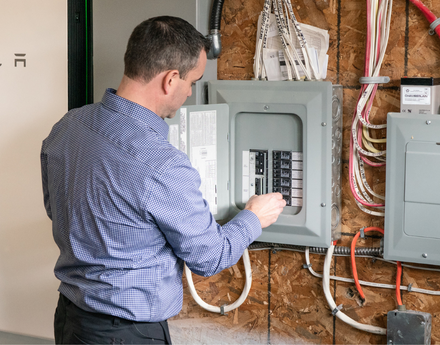Upgrading Electrical Panel
Electrical Panel Upgrade Program

Why you should upgrade your panel
OUR PANEL UPGRADE PROGRAM IS DESIGNED TO HELP
If you think your panel might need upgrading, we can help you find an approved electrician who can assess your power needs based on your future goals. If the result of the assessment suggests a panel upgrade, we can help you arrange the work. The upgrade can be done in one day, and it involves swapping out your outdated panel for a larger new one. The average cost, including parts and labour, is approximately $5,000. But once it’s done, you’ll be ready to take advantage of all the benefits electrification offers!
An electrical permit and inspection(s) are required when such alterations are made to your electrical system. Your contractor will be able to provide you this information or may also view these requirements by searching the Electrical Bulletins page on our website.
Where an upgrade in your service capacity is made (i.e. Changing from 100 amps to 200 amps), additional safety related requirements may be necessary. You may also learn more about these requirements by clicking the Electrical Bulletins link above and review NSPI Bulletin B-02-022.
Ready to upgrade?
The first step is to contact one of our preferred contractors. They’re available province-wide, will perform a home assessment that helps determine options that are best for your home, and they’ll supply a quote for the work. We recommend getting quotes from up to three different contractors.


